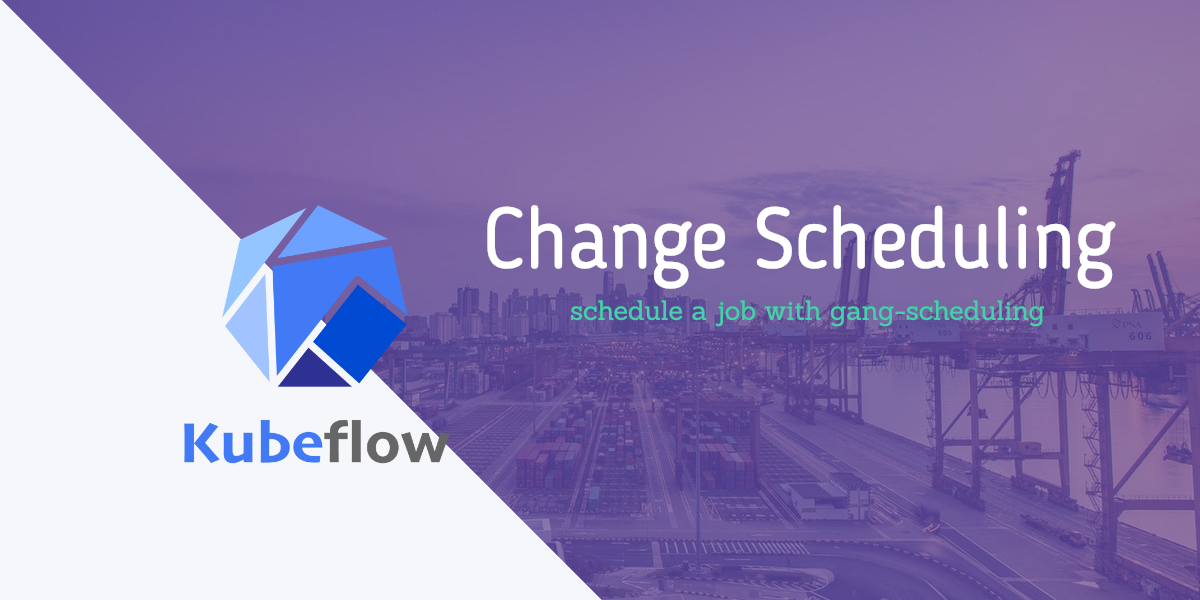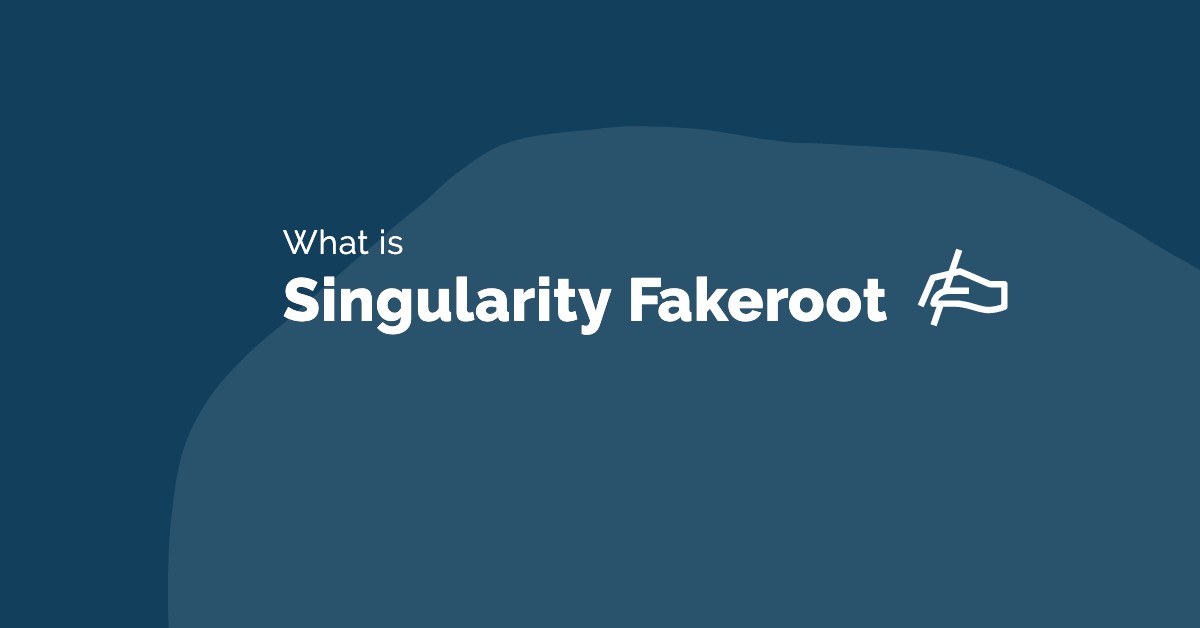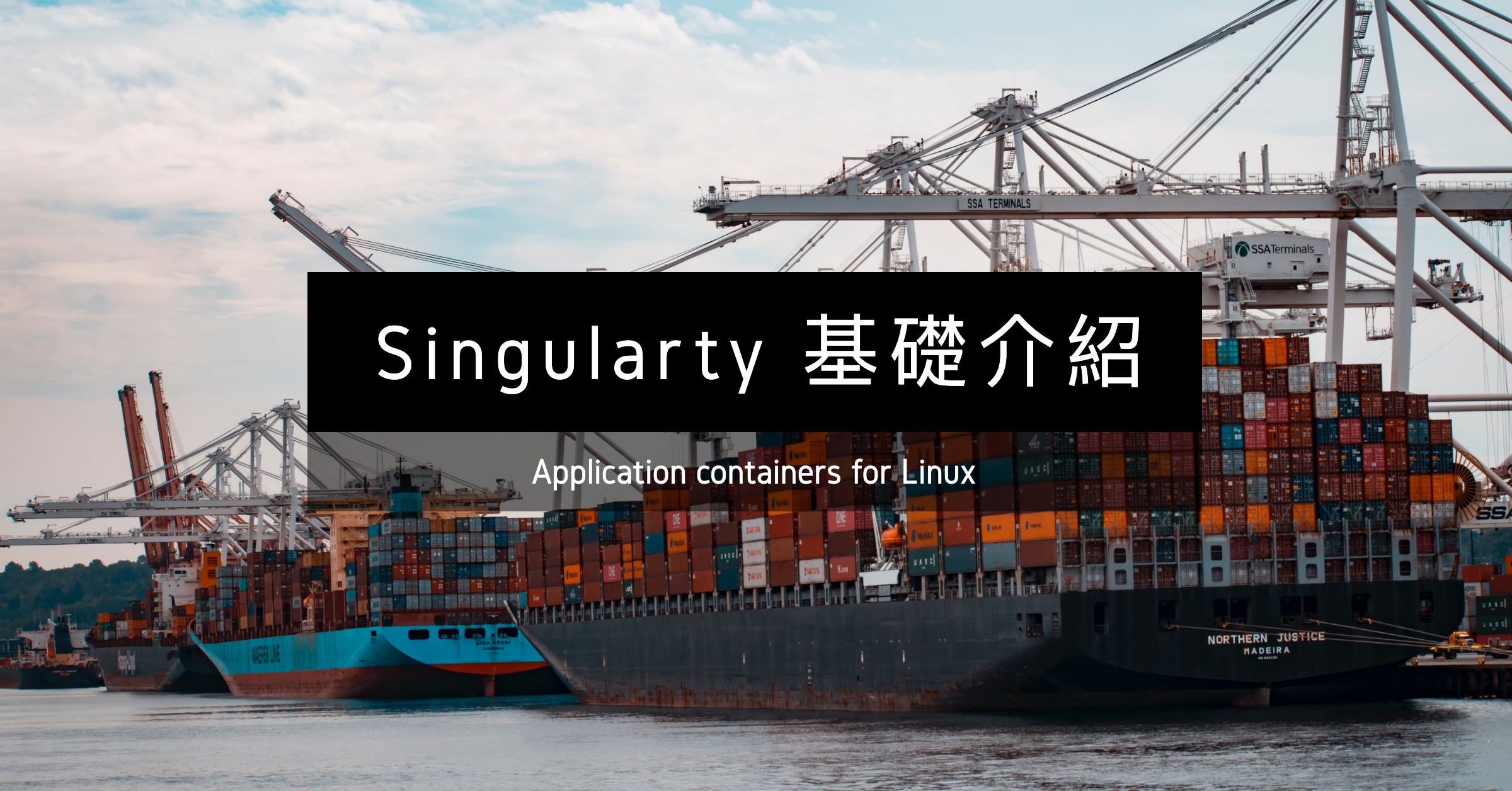本篇文章將說明實作官網 [kubeflow/Job Scheduling] ,所介紹的如何使用 gang-scheduling 更換原 kubeflow 預設 scheduler 機制。文章教學介紹透過使用kube-batch 以支持 kubeflow 透過gang-scheduling排程方式,來同時允許多個Pod執行解決deadlock問題。
tf-operator 實現 gang-scheduler 已經從 PDB 轉換為 PodGroups已更新於文章 Kube-batch-tutorial 介紹 or volcano
本篇實作主要感謝 @kubeflow member and Kubeflow/tf-operator reviewer @Jack Lin 撰寫的教學
實驗環境 本實驗環境為 kubernetes HA Cluster + 4*GPU Node :
Kubernetes v1.11.2
Etcd v3.2.9
containerd v1.1.2
IP Address
Hostname
CPU
Memory
Extra Device
192.168.0.98
VIP
192.168.0.81
k8s-m1
4
16G
無
192.168.0.82
k8s-m2
4
16G
無
192.168.0.83
k8s-m3
4
16G
無
192.168.0.84
k8s-g1
4
16G
GTX 1060 6G
192.168.0.85
k8s-g2
4
16G
GTX 1060 6G
192.168.0.86
k8s-g3
4
16G
GTX 1060 6G
192.168.0.87
k8s-g4
4
16G
GTX 1060 6G
配置更換預設 scheduling 要讓環境使用gang-scheduling排程,必須先在叢集中安裝 kube-batch 作為 Kubernetes 額外可選擇的排程機制,並配置 operator 以啟用gang-scheduling。
Note by job scheduling :
Kube-batch’s introduction is here, and also check how to install it here
Take tf-operator for example, enable gang-scheduling in tf-operator by setting true to --enable-gang-scheduling flag.
1. kube-batch install 參考kube-batch 詳細介紹與安裝方式[tutorial] ,以下為實驗記錄。
在叢集中 安裝 Helm tool:
1 2 $ wget -qO- https://storage.googleapis.com/kubernetes-helm/helm-v2.12.2-linux-amd64.tar.gz | tar -zx $ sudo mv linux-amd64/helm /usr/local /bin/
初始化 Helm (並安裝 Tiller Server):
1 2 3 4 5 6 $ kubectl -n kube-system create sa tiller $ kubectl create clusterrolebinding tiller --clusterrole cluster-admin --serviceaccount=kube-system:tiller $ helm init --service-account tiller Tiller (the Helm server-side component) has been installed into your Kubernetes Cluster. Happy Helming!
# Config kube-batch for Kubernetes 在k8s-m1節點上執行:
1 2 3 $ mkdir -p $GOPATH /src/github.com/kubernetes-sigs/ $ cd $GOPATH /src/github.com/kubernetes-sigs/ $ git clone http://github.com/kubernetes-sigs/kube-batch
Deploy kube-batch by Helm
1 2 3 4 5 6 7 8 9 10 11 12 13 14 15 16 17 18 19 20 21 22 23 $ helm install $GOPATH /src/github.com/kubernetes-sigs/kube-batch/deployment/kube-batch --namespace kube-system NAME: mortal-buffalo LAST DEPLOYED: Sun Jan 20 19:12:50 2019 NAMESPACE: kube-system STATUS: DEPLOYED RESOURCES: ==> v1beta1/CustomResourceDefinition NAME AGE podgroups.scheduling.incubator.k8s.io 0s queues.scheduling.incubator.k8s.io 0s ==> v1/Deployment kube-batch 0s ==> v1/Pod(related) NAME READY STATUS RESTARTS AGE kube-batch-5d7d955f84-jw8gx 0/1 Pending 0 0s NOTES: The batch scheduler of Kubernetes.
驗證 kube-batch 已部署於kubernetes:
1 2 3 $ helm list NAME REVISION UPDATED STATUS CHART APP VERSION NAMESPACE zooming-cricket 1 Wed May 15 15:07:04 2019 DEPLOYED kube-batch-0.4.2 kube-system
2. 新增 RBAC 給 kube-batch GitHub 安裝 kube-batch 補充說明提到,需要自己額配置RBAC給kube-bath
Note by kube-batch :
kube-batch need to collect cluster information(such as Pod, Node, CRD, etc) for scheduling, so the service account used by the deployment must have permission to access those cluster resources, otherwise, kube-batch will fail to startup.
For users who are not familiar with Kubernetes RBAC, please copy the example/role.yaml into $GOPATH/src/github.com/kubernetes-sigs/kube-batch/deployment/kube-batch/templates/ and reinstall batch.
創建 RBAC 「ServiceAccount」、「ClusterRoleBinding」,名稱並為name: kube-batch:
1 2 3 4 5 6 7 8 9 10 11 12 13 14 $ cat <<EOF | kubectl create -f - apiVersion: rbac.authorization.k8s.io/v1beta1 kind: ClusterRoleBinding metadata: name: default-sa-admin subjects: - kind: ServiceAccount name: default namespace: kube-system roleRef: kind: ClusterRole name: cluster-admin apiGroup: rbac.authorization.k8s.io EOF
3. kube-batch 啟用 gang-scheduling 配置 確認叢集中 所配置的 kubeflow Namespace 當前運行的 Deploment,並找到tf-job-operator:
將以下規則添加到 tf-job-operator clusterrole 以授予 tf-job-operator 創建權限 PodGroup
1 2 3 4 5 6 7 8 9 $ kubectl -n kubeflow edit clusterrole tf-job-operator ... ... - apiGroups: - scheduling.incubator.k8s.io resources: - podgroups verbs: - '*'
tf-operator 通過添加標記啟用 gang-scheduling --enable-gang-scheduling=true
1 2 3 4 5 6 7 8 9 10 $ kubectl -n kubeflow edit deployment tf-job-operator ... spec: containers: - command : - /opt/kubeflow/tf-operator.v1beta2 - --alsologtostderr - -v=1 - --enable -gang-scheduling=true ...
4. 測試範例 - 配置 YAML 增加 PodGroups 這邊要注意運行的範例 TFJob,需要配置對應 scheduling.k8s.io/group-name: ${PodGroupName} 已啟用 PodGroups,而名稱要與當前 Job ${name}設定相同。
1 2 3 4 5 6 7 8 9 10 11 12 13 14 15 16 17 18 19 20 21 22 apiVersion: "kubeflow.org/v1beta1" kind: "TFJob" metadata: name: "gang-scheduling-podgroup" spec: cleanPodPolicy: None tfReplicaSpecs: Worker: replicas: 2 restartPolicy: Never template: metadata: annotations: scheduling.k8s.io/group-name: "gang-scheduling-podgroup" spec: schedulerName: kube-batch containers: - name: tensorflow image: gcr.io/kubeflow-examples/distributed_worker:v20181031-513e107c resources: limits: nvidia.com/gpu: 1
[補充說明] TFJob 配置 YAML 實現 gang-scheduling 執行 job-scheduling 介紹的範例:
1 2 3 4 5 6 7 8 9 10 11 12 13 14 15 16 17 18 19 20 21 22 23 24 25 26 27 28 29 30 31 32 33 34 35 36 37 38 39 40 41 42 43 44 45 46 47 48 49 50 51 52 53 54 55 56 57 58 59 60 61 62 63 apiVersion: "kubeflow.org/v1beta1" kind: "TFJob" metadata: name: "tfjob-gang-scheduling" namespace: "kubeflow" spec: tfReplicaSpecs: Worker: replicas: 1 template: metadata: annotations: scheduling.k8s.io/group-name: "tfjob-gang-scheduling" spec: schedulerName: kube-batch nodeSelector: gpu: "1060g1" containers: - args: - python - tf_cnn_benchmarks.py - --batch_size=4 - --model=inception3 - --variable_update=parameter_server - --num_gpus=1 - --local_parameter_device=cpu - --device=gpu - --data_format=NHWC image: yylin1/tf-benchmarks-gpu:gpu-v1 name: tensorflow resources: limits: nvidia.com/gpu: 1 workingDir: /opt/tf-benchmarks/scripts/tf_cnn_benchmarks restartPolicy: OnFailure PS: replicas: 1 template: metadata: annotations: scheduling.k8s.io/group-name: "tfjob-gang-scheduling" spec: schedulerName: kube-batch nodeSelector: gpu: "1060g1" containers: - args: - python - tf_cnn_benchmarks.py - --batch_size=4 - --model=inception3 - --variable_update=parameter_server - --num_gpus=1 - --local_parameter_device=cpu - --device=cpu - --data_format=NHWC image: yylin1/tf-benchmarks-gpu:gpu-v1 name: tensorflow resources: limits: cpu: '1' workingDir: /opt/tf-benchmarks/scripts/tf_cnn_benchmarks restartPolicy: OnFailure
tfjob-gang-scheduling yaml範例中,要使用kube-batch為選用的排程機制,這邊要在Spec指定 schedulerName:kube-batch。
1 2 spec: schedulerName: kube-batch
[補充說明] gang-scheduling 實驗測試 環境目前有4個GPU Node節點,運行流程先執行yylin-job1之後再執行yylin-job2 測試環境,以觀察:
通過使用kube-batch來啟用gang-scheduling,而只有當有叢集環境中有足夠的資源執行給所有pod時,才能運行任務。否則所有pod將處於Pending狀態,等待足夠的資源。
若使用預設kubeflow scheuler會導致同一個Job資源不夠,但Worker照常運行,導致執行Job任務是無意義的。
Job 配置:
啟用schedulerName: kube-batch:
1 2 3 4 5 6 7 8 $ kubectl get pod -n kubeflow tfjob-gang-scheduling-ps-0 1/1 Running 0 43s tfjob-gang-scheduling-worker-0 1/1 Running 0 43s tfjob-gang-scheduling-worker-1 1/1 Running 0 43s tfjob-gang-scheduling-worker-2 1/1 Running 0 43s tfjob-gang-scheduling2-ps-0 1/1 Running 0 38s tfjob-gang-scheduling2-worker-0 0/1 Pending 0 38s tfjob-gang-scheduling2-worker-1 0/1 Pending 0 38s
預設kubeflow scheuler:
1 2 3 4 5 6 7 8 $ kubectl get pod -n kubeflow tfjob-gang-scheduling-ps-0 1/1 Running 0 1m tfjob-gang-scheduling-worker-0 1/1 Running 0 1m tfjob-gang-scheduling-worker-1 1/1 Running 0 1m tfjob-gang-scheduling-worker-2 1/1 Running 0 1m tfjob-gang-scheduling2-ps-0 1/1 Running 0 34s tfjob-gang-scheduling2-worker-0 1/1 Running 0 34s tfjob-gang-scheduling2-worker-1 0/1 Pending 0 34s
Reference:





